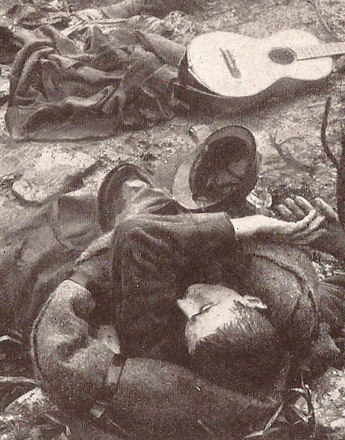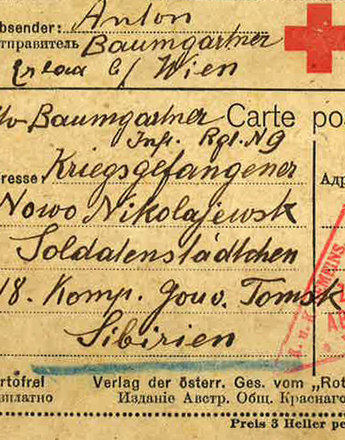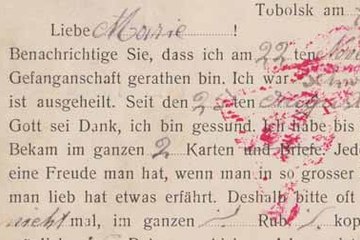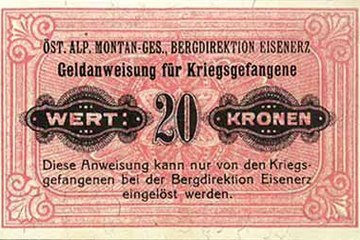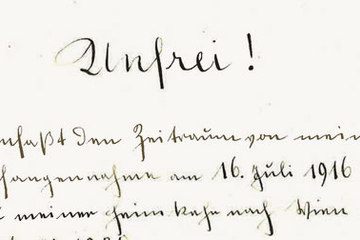During the First World War millions of the enemy’s armies were taken prisoner. But no major power lost as many soldiers through being internment as the Danube Monarchy.
The ‘accountants’ of the four-year long mass slaughter provided startling statistics: Russia called to arms 16 million men up to 1918, Germany 13, Great Britain 9 and France 8.5. In Austria-Hungary the number of those mobilised reached 9 million, in Italy 5.5, in the USA 4.7 million, and in the Ottoman Empire 3 million men. All in all nearly 9 million of them were taken prisoner of war by ‘enemy states’, whereby the majority of war prisoners – around 5 million up to 1917 – were recorded on the ‘Eastern battlefields’.
In the long term the fighting between the Baltic and the Black Sea had been characterised by at least partially successful offensives with entrapment manoeuvres and gains in territory. The consequences were already foreseeable during the opening campaigns. As early as September 1914 the Austro-Hungarian troops lost some 100,000 men taken prisoner from the 800,000 troops with which the operations on the North-eastern front had been initiated. When the Przemyśl fortress fell on March 23, 1915, a larger formation of the Habsburg army had to surrender to the Russian besiegers, meaning nine generals, nearly 2,600 officers and 117,000 soldiers. Conversely, things did not go much better for the Tsarist Army vis-à-vis the Germans: in the so-called ‘Battle of Tannenberg’ at the end of August 1914, 100,000 soldiers of the Romanov Army capitulated. During the conquest of Polish territories by the Central Powers, the number of Russian prisoners of war rose. In August 1915 alone, German and Austro-Hungarian troops took control of some 325,000 members of the Tsarist armed forces.
According to estimates, the Russian armies lost around 1 million men in all to the Danube Monarchy, and 1.4 million to the Hohenzollern Empire, while conversely around 160,000 German and more than 2 million Austro-Hungarian soldiers landed in Russian camps. The sheer scale of the prisoner of war problem in ‘the East’ becomes even clearer when one considers that around 600,000 Italian prisoners were taken by the Central Powers; on average 425,000 to 480,000 members of the Hohenzollern and Habsburg armies were taken prisoner in France from the end of 1916 to November 1918; and that in the German Empire around 535,000 French and 185,000 British soldiers were detained as of the middle of October 1918.
Under these circumstances, measured by the overall strength of the armies concerned, every thirteenth German of the imperial army, every tenth Frenchman or Italian, and at least every fifth combatant of the Tsarist and nearly every one in three of the Habsburg military forces found himself held in captivity by the enemy.
Leidinger, Hannes/Moritz, Verena: Gefangenschaft, Revolution, Heimkehr. Die Bedeutung der Kriegsgefangenenproblematik für die Geschichte des Kommunismus in Mittel- und Osteuropa 1917–1920, Wien/Köln/Weimar 2003
Moritz, Verena/Leidinger, Hannes: Zwischen Nutzen und Bedrohung. Die russischen Kriegsgefangenen in Österreich-Ungarn (1914–1921), Bonn 2005
Oltmer, Jochen (Hrsg.): Kriegsgefangene im Europa des Ersten Weltkriegs, Paderborn/München/Wien 2006
-
Chapters
- Numbers and Dimensions
- Captivity
- The situation of prisoners of war in Austria-Hungary
- Humanitarian catastrophes in captivity
- Aid for prisoners for war
- National propaganda and prisoners of war
- The relationship between prisoners of war and the civilian population
- The Meaning of Prisoners’ Labour
- Witnesses and actors in the revolution
- ‘Transport Home from Captivity’
- Difficult Homecoming


